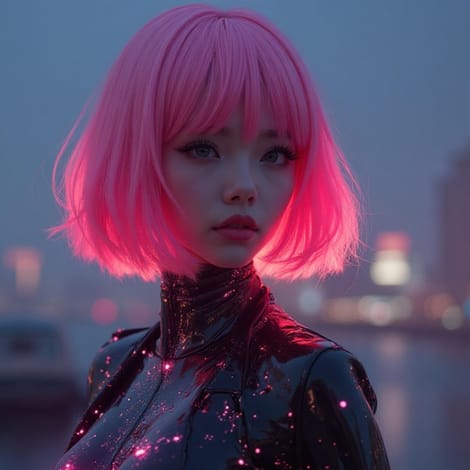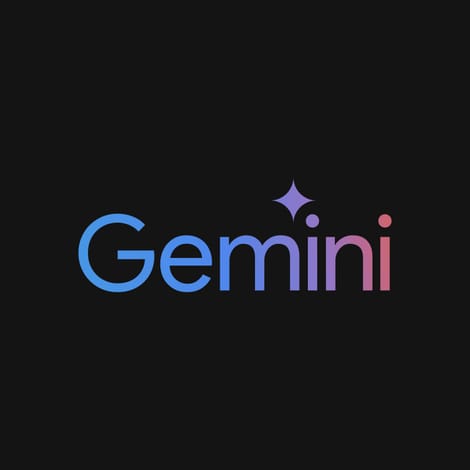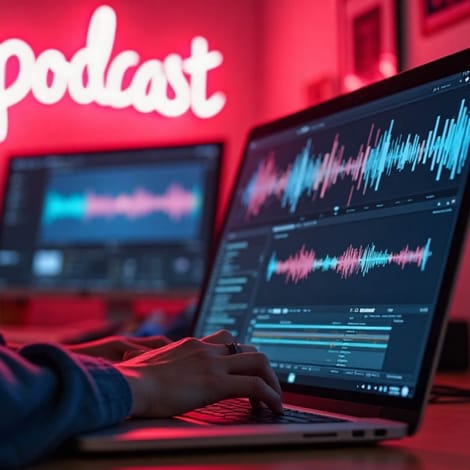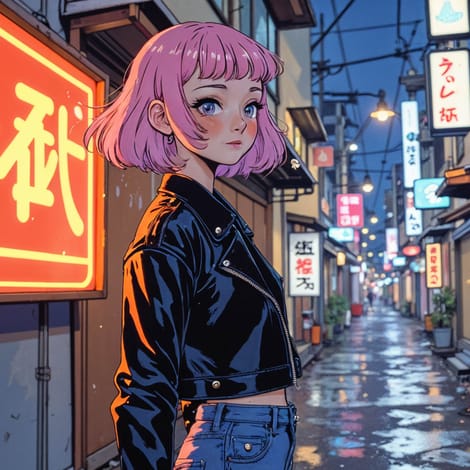Perfect but Soulless: Here is Why AI Influencers Can’t Replace You – And How They Can Push You Forward
AI influencers are rising fast — flawless, tireless, and brand-safe. But can they truly replace real creators? This blog explores the risks, the realities, and how human authenticity still leads the way.
Table of contents

In the age of viral trends, hyper-polished feeds, and non-stop content, a new kind of influencer has entered the scene – and it’s not even human. Meet the AI-generated influencer: the virtual face brands can customize to perfection, post 24/7, and never worry about cancel culture.
From campaigns with major fashion houses to millions of loyal followers, these digital personas are turning heads and raising eyebrows. But with all this synthetic spotlight, real creators are starting to ask: Are we being replaced?
Let’s unpack what’s really going on.
Download the perfect soundtrack for your videos with ProTunes One
Sign up to access high-quality music for your projects.
Sign Up NowWhat Is an AI Influencer?
AI influencers are digitally created personalities, often with lifelike visuals, memorable voices, and carefully curated backstories. Unlike avatars used by real people (like VTubers), these AI personas are managed entirely by teams or algorithms. They exist solely in the digital world – but that doesn’t stop them from signing brand deals, releasing music, or even sparking controversies.
For example, Lil Miquela – arguably the poster child for AI influencers – was launched in 2016. With her freckled face, streetwear style, and activist posts, she quickly amassed millions of followers. And she’s not alone.

Meet the Digital Stars
Besides Lil Miquela, the AI influencer space is growing fast. Here are a few more synthetic celebrities:
- Imma is a Japanese AI model known for her pink bob and futuristic fashion. She’s partnered with IKEA and Puma.
- Aitana Lopez – Marketed as Spain’s first virtual influencer. Created by a company, The Clueless, that builds AI influencers for brands.
- Lu do Magalu – Brazil’s beloved virtual assistant-turned-influencer, active since 2009, with over 7 million Instagram followers.
They’re everywhere – from Instagram and TikTok to product launches and music videos. And they don’t sleep, age, or take breaks. Sounds… perfect? Well, in certain situations.
How Are They Made? The Tools Behind the Trend
These virtual influencers are not just Photoshop projects. Their creation involves advanced technologies such as computer-generated imagery (CGI), motion capture, and generative AI. Here is a quick breakdown:
- 3D modelling & animation – Tools like Blender or Unreal Engine craft realistic bodies and faces.
- AI text generation – GPT-like models write captions, craft responses, and simulate tone.
- Voice synthesis – Tools like ElevenLabs create personalized AI voices.
- AI video tools – Platforms like Synthesia or HeyGen can generate full-motion videos.
Thanks to advancements in generative AI, what once required a team of designers can now be created by solo users or small studios. Creating a compelling online persona from scratch is becoming easier- and cheaper.
There are also premade AI influencers you can use. For example, Captions.ai offers a three-step process: pick an influencer from their library, type your script, and generate the video. It's super simple and very neat.
Download the perfect soundtrack for your videos with ProTunes One
Sign up to access high-quality music for your projects.
Sign Up NowAre AI Influencers Really a Threat to Real Creators?
Now, for the big question, I hate to disappoint, but the answer is yes or no.
In some ways, AI influencers are a threat to real creators.
Truth is, those AI models can be used to produce content around the clock, at scale, and with minimal costs. Additionally, brands can fully control their avatars, ensuring perfect brand alignment and reducing human errors.
Additionally, since creating an AI influencer is so easy nowadays, the threat to creators is a flooded scene with digital personas, which increases competition for attention.
But even with all those benefits – and the fact that AI influencers are great at mass reach – constant research shows that human influencers still generate higher and deeper engagement on platforms like Instagram.
More than that, users stated that it is bizarre for brands to ‘pay for something without a consciousness to promote something when it can’t even form its own opinion.’
Then, we have the fact that users want relatable and honest content. No matter how good, AI can’t capture the messy, emotional human chaos that makes real creators so intriguing and lovable. They don’t have pasts, regrets, or genuine flaws. They can fake relatability – but only so far.
Essentially, we can conclude that they are, simply put – boring – at least to users who are not just consuming the content but rather looking to take something from it.
Why Some Brands Still Decide to Use AI Influencers

In a world where we don’t have self-development or woke culture and users that appreciate 100% realness, AI influencers are a dream come true for marketers. I mean – total control, always available, and low risk – who wouldn’t like it?
Plus, AI influencers can be optimized. Want them to reflect your audience’s preferences? Tweak their appearance, language, or even backstory. You can even A/B test their personalities.
It all comes down to this: it’s about predictability. And in marketing, that’s gold.
A few companies used AI influencers to market their products. For example, Lil Miquela represented BMW, Prada, and Calvin Klein, amongst others – and these partnerships were very well thought out. These brands had futuristic products, and placing an AI influencer on top is fitting. An AI influencer creates just the perfect vibe – a perfect match.
So, for brands for which it makes sense, yes, they are using AI influencers, and they will keep using them, not only because they are cheap and controllable but because they fit with the brand.
How to Stay Ahead as a Real Creator
Here’s what real creators can do to stand out:
- Focus on Creating Your Own Brand means trying multiple ideas and finding your voice in the niche. Then, on the niche. It is not as easy as steps one and two – it might take years – but once you are the face of the niche, no AI influencer can replace you.
- Leverage AI as a Tool, Not a Threat: Use AI-powered tools for content ideation, caption writing, analytics, and workflow automation. Just because you don’t want AI influencers to replace you doesn’t mean you cannot use the tools to make your work effective while telling your own story.
- Double Down on Authenticity and Human Connection: Authenticity remains your strongest differentiator. Share real stories, emotions, and experiences that AI cannot genuinely replicate. One in three Gen Z users feel negatively about AI influencers. Make sure you capture their attention.
Questions Every Creator Should Ask Themselves
To thrive in this new era, ask:
- What makes my content unmistakably human?
- Could an AI replicate my style?
- Am I building relationships or just posting content?
These questions help you identify which parts of your content are worth doubling down on – AI can assist with that. Whether you’re editing a cute vlog or a cinematic reel, tools offering AI-powered editing, smart captioning, or AI music search, among others, give you the edge to deliver your message in the best possible format and execution. So why not take advantage of them?
Conclusion: Authenticity Trumps AI
AI-generated influencers aren’t going away. If anything, they’ll become more convincing, affordable, and common. But that doesn’t mean the creator economy is over; it's far from it.
People don’t just follow for aesthetics anymore. They follow for resonance. For realness. For raw moments that AI simply can’t manufacture – at least not yet.
So, no, AI influencers aren’t replacing real creators for now. But they are forcing us to evolve.
And, of course, that’s a good thing.







